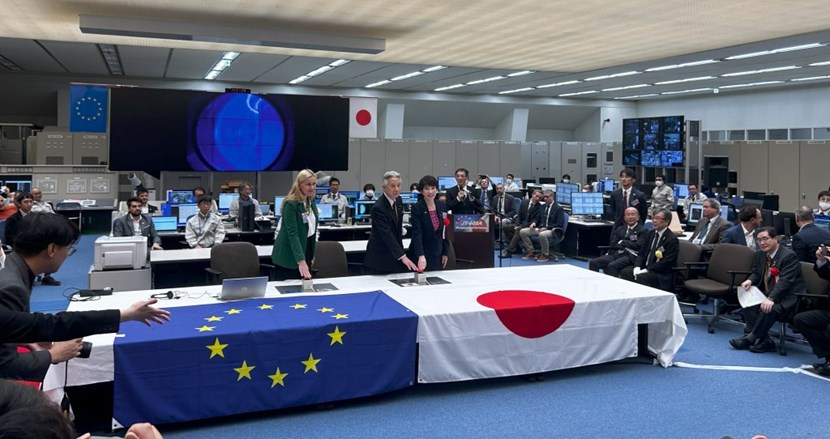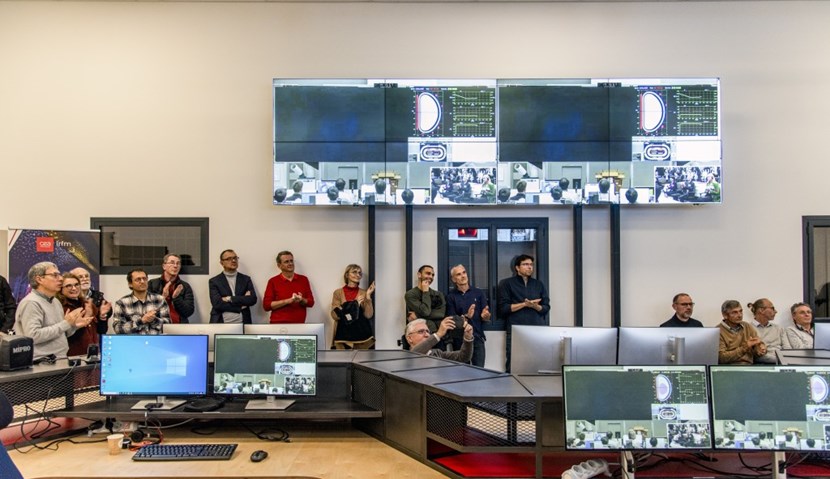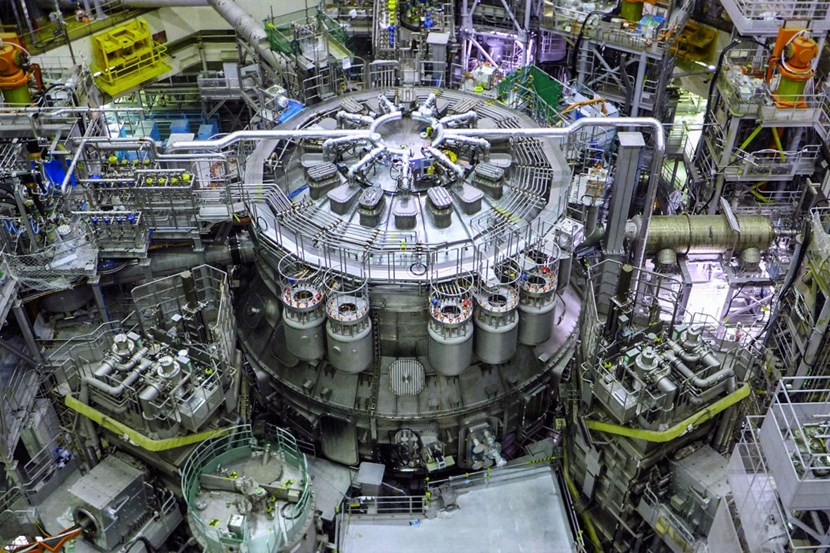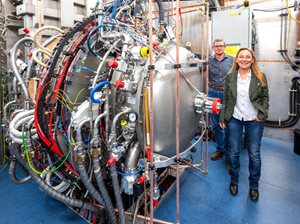
''Please show us now what JT-60SA can do!'' said Sam Davis, the deputy project leader. And the European Commissioner for Energy, Kadri Simson, together with Japan's Minister for Education, Culture, Sports, Science and Technology, Masahito Moriyama, and Japan's Minister of State for Science and Technology Policy, Sanae Takaichi, did exactly that: by pressing the red button, they initiated the sequence of a 10-second, one--million-ampere, 80-million-degree plasma.
JT-60SA is one of the projects of the

Ten thousand miles away from Naka and eight time zones behind, staff from ITER, EUROfusion and the French Institute for Magnetic Fusion Research (CEA-IRFM) gathered at the recently created ''remote experiment centre'' (https://www.iter.org/newsline/-/3578) to be part of the celebration.
At a ceremony held on 1 December 2023, Europe's Commissioner for Energy Kadri Simson, together with Japan's Minister for Education, Culture, Sports, Science and Technology (MEXT) Masahito Moriyama, and Japan's Minister of State for Science and Technology Policy Sanae Takaichi, were joined by senior politicians, representatives from industry, and the research community to inaugurate the JT-60SA facility.

With the European JET soon to retire, JT-60SA is now the largest tokamak in the world, with a plasma radius of 3 metres and a plasma volume of 130 m³. ''With this tokamak, Japan and Europe are positioning themselves as world leaders on magnetic fusion research,'' said Europe's Commissioner for Energy Kadri Simson. ©F4E/QST
Minister for Science and Technology Policy Sanae Takaichi commented, "The successful generation of the first plasma is a significant achievement that will lead to the early realization of fusion energy. During the Council for Science, Technology and Innovation plenary session in June this year, I witnessed both Japanese and European researchers working very hard to realize the first plasma. I am very pleased that the efforts of these researchers have borne fruit. Based on the success of this first plasma generation, we would like to do our best for the development of fusion energy and its related industries, while fundamentally strengthening research and development and involving the industrial community to establish an industrial council."








